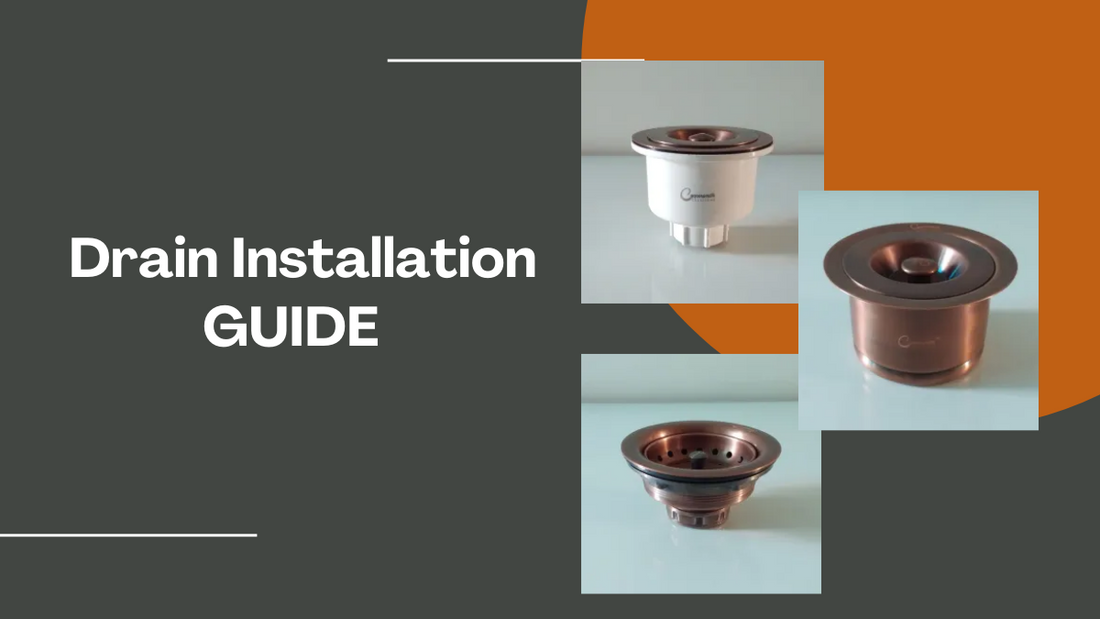
Mastering Your Kitchen Sink: A Step-by-Step DIY Guide to Drain Installation
Revamping your kitchen is an exciting venture, and installing a new sink can be a focal point of this transformation. While the idea of handling the drain installation may seem daunting, fear not! This comprehensive DIY guide will walk you through the process, making it a manageable and rewarding project. Armed with the right tools and a systematic approach, you'll achieve a sleek and functional kitchen sink with confidence. Let's delve into the details and turn your kitchen upgrade into a success.
Tools and Materials:
Before you begin, gather these essential tools and materials:
- Plumber's putty
- Plunger
- Pipe wrench
- Adjustable pliers
- Teflon tape
- Pipe cutter
- Screwdriver
- Bucket
- Hacksaw
- Pipe fittings (P-trap, tailpiece, trap arm)
- Compression fittings
- Slip-joint pliers
Step 1: Prepare the Space:
Clear out the area under the sink, creating a workspace conducive to easy access to the plumbing.
Step 2: Turn Off Water Supply:
Locate and turn off the shut-off valves beneath the sink, shutting down both hot and cold water supplies.
Step 3: Disconnect Existing Plumbing:
Employ a pipe wrench or adjustable pliers to disconnect existing plumbing, loosening nuts and washers connecting the old drain pipes.
Step 4: Bid Farewell to the Old Drain:
Say goodbye to the old drain by loosening the slip nut connecting it to the sink strainer. Ensure any remnants of old plumber's putty are removed.
Step 5: Clean the Sink Opening:
Prepare the sink opening by removing any remaining plumber's putty or debris, using a putty knife or scraper.
Step 6: Apply Plumber's Putty Seal:
Craft a small rope of plumber's putty and apply it around the underside of the new sink strainer. Press the strainer into the sink opening for a secure seal.
Step 7: Embrace the Basket Strainer:
Thread the slip nut onto the basket strainer from beneath the sink and use pliers to tighten it securely, anchoring the strainer in place.
Step 8: Connect the Tailpiece:
Join the tailpiece to the bottom of the basket strainer with a slip nut, ensuring a snug and secure connection using pliers.
Step 9: Assemble the P-Trap:
Link the P-trap to the tailpiece and the wall drain pipe, maintaining a slight downward angle for effective drainage.
Step 10: Check for Leaks:
Activate the water supply and inspect thoroughly for leaks. Tighten any connections if needed.
Step 11: Secure the Pipes:
Use pipe hangers or straps to secure the drain pipes to the wall or cabinet, preventing sagging and ensuring proper drainage.
Conclusion:
With this detailed guide, you're well-equipped to tackle the installation of your kitchen sink drain. Take your time, follow each step carefully, and enjoy the satisfaction of a successfully upgraded kitchen sink. If challenges arise, consider seeking advice from a professional plumber. Now, go ahead and transform your kitchen into a stylish and efficient space – happy plumbing!
